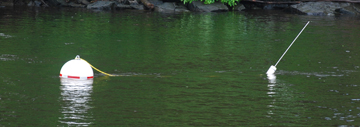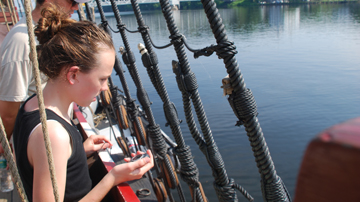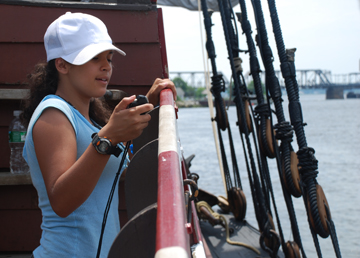 |
|
|

Current speed is a major factor for any waterborne vessel. When we sail with the current, the water travels with us, speeding us along. When we move against the current, the oncoming water pushes against us, slowing us down. In addition, the Connecticut River is an estuary, and thus affected by ebb and flood tides; this causes the river's current to slow and even reverse itself several times a day.
|

Keeping track of the Connecticut's current is vital for ships looking to make good time on the river. This was even more true in the 17th century, when attempting to sail against a strong current could easily prove futile (this was indeed the case for us on Long Island Sound on Day Three).
|

Measuring the current is trickier than it looks. Our crew members learn that waves rippling across the water's surface are actually caused by the wind (and, with practice, can even be used to estimate wind speed) -- but those ripples don't tell us anything about the current's speed or direction.
|

Waves may not tell us about the current, but debris floating in the water can. To measure the current, students toss a harmless, biodegradable object into the water -- such as a wood chip or a crouton donated from the galley -- then time how long the crouton takes to float down the length of the weather deck. Some quick calculations are then needed to determine in what direction, and how strongly, the water is pushing the ship.
|
| |
|
|

